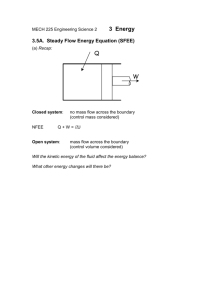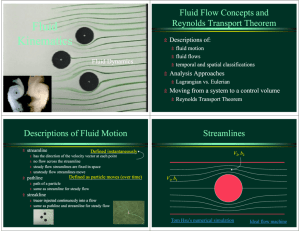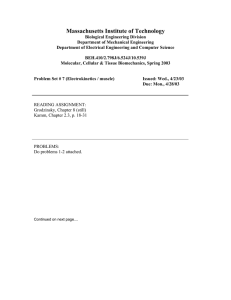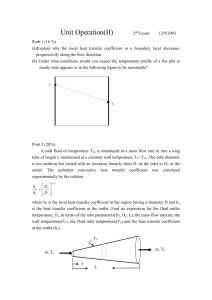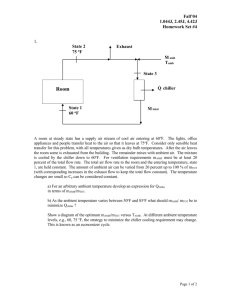First Law for open systems
advertisement
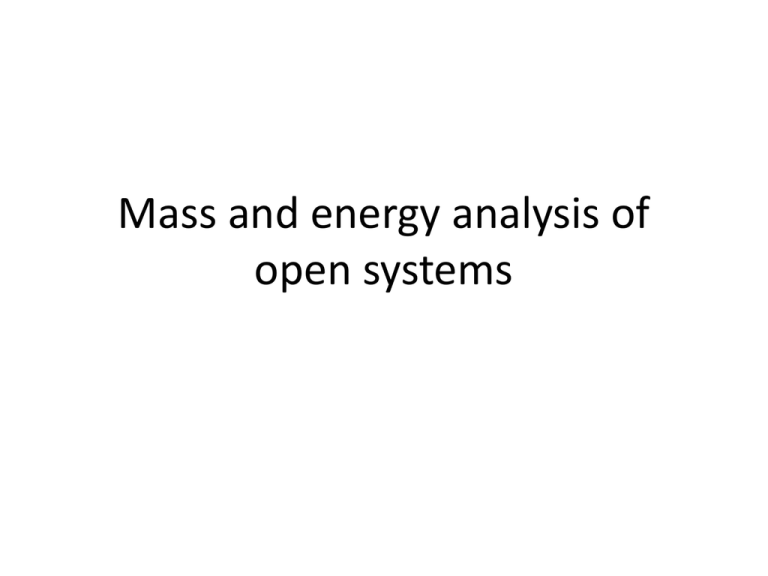
Mass and energy analysis of open systems Open systems • When matter crosses the boundaries of a system chosen for thermodynamic analysis, the system is known as open system or control volume (CV). • Many open systems of practical interest involve fluid crossing the boundaries through one or more inlet and outlet ports i.e. a flow process occurring through the control volume. Dark line encloses CV CV Flow processes are processes that involve fluid “particles/elements” entering or leaving with specified kinetic and gravitational potential energies through the control volume Examples of open systems Source: internet Schematic and modeling approach for engineering open systems Broken line is CV chosen The steady flow process • • • A process during which the fluid flows steadily through the control volume (CV) – Flow process fluid flows through CV. – Steady not changing with time During a steady flow process: – conditions (fluid properties, flow velocity, elevation) at any fixed point within the CV are unchanging with time. – Properties, flow velocity or elevation may change from point to point within CV – Size, shape, mass and energy content of the CV do not change with time. – Rate at which heat and work interactions take place with surroundings do not change with time. Devices/systems which undergo steady flow process: compressors, pumps, turbines, water supply pipes, nozzles, heat exchangers, power plants, aircraft engines etc. ENGINEERING examples of open systems undergoing STEADY FLOW PROCESSES Source: internet • Turbine • Compressor (related: pump, blower) • Heat exchanger (related terms: boiler/condenser/evaporator, mixer etc.) • Nozzle/diffuser • Throttling devices (related terms: valves) Unsteady flow process (example) Two peculiar boundary phenomena in open systems: • Along with mass, thermodynamic properties enter and leave the system through the inlet/outlet ports. • As the fluid flows on, “invisible pistons” are pushed into the inlet ports and pushed out of the outlet ports.

